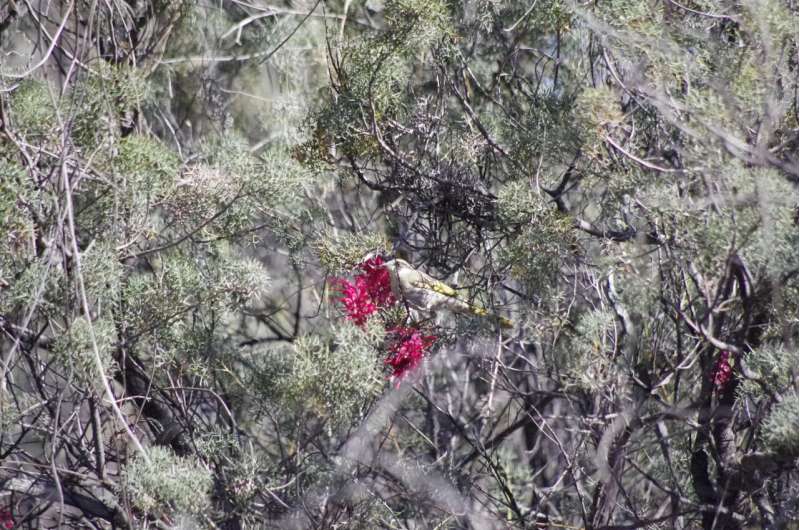This article has been reviewed according to Science X's editorial process and policies. Editors have highlighted the following attributes while ensuring the content's credibility:
fact-checked
trusted source
proofread
Monitoring the birds and the bees: eDNA metabarcoding of flowers detects plant–animal interactions

Curtin researchers have uncovered new evidence of western pygmy possums interacting with native flowers, providing the first eDNA study to simultaneously detect mammal, insect and bird DNA on flowers.
The new research, published today in Environmental DNA, examined DNA traces left by animal pollinators on native flora and detected both insect and animal pollinators from multiple flowering plant species at once—a game changer in the face of declining animal pollinators globally.
In North America, some pollinator species have fallen by more than 95 percent while native plant species across America have declined between three and 50 percent. In some parts of Europe, wild pollinator diversity has more than halved and one in three bee, butterfly and hoverfly species are disappearing.
Lead author Joshua Newton, a Ph.D. candidate in Curtin's School of Molecular and Life Sciences, said the research offered new scientific evidence to support the use of environmental DNA as a tool to help survey and monitor plant-animal interactions.
"We know the significant role that animal pollinators play in the reproduction of about 90 percent of flowering plants, but this crucial relationship is under threat as many of these species are experiencing declines across the globe," Mr. Newton said.
"That means effective pollinator monitoring methods are now more important than ever before, as we search for new, fast and accurate ways of safeguarding the future of endangered flora."
The study identified five mammals including the surprising western pygmy possum, eight bird species including singing honeyeaters and yellow-throated miners, and 57 arthropods including moth families that had not previously been recorded as flower visitors.
Project lead Associate Professor Paul Nevill, from Curtin's School of Molecular and Life Sciences, said better methods to monitor pollinators were desperately needed given their ongoing declines.
"This disruptive technology is in the early stage of application in terrestrial systems, and will not only allow us to detect pollinators but multiple other species—for example, pests and invasive species—that interact with plants," Associate Professor Nevill said.
"eDNA offers an opportunity to explore and monitor ecosystems at multiple levels—not just what we are able to easily see, hear and identify under a microscope."
Co-author Associate Professor Bill Bateman, also from Curtin's School of Molecular and Life Sciences, said the metabarcoding of eDNA traces was able to detect interactions between pollinators and flowers.
"We were especially pleased to find evidence of a western pygmy possum visiting a flower because at the time it was the first eDNA metabarcoding based identification of an interaction of a mammal or bird species with flowers, to our knowledge," Associate Professor Bateman said.
"This finding shows us that the eDNA metabarcoding of flowers offers a more complete set of floral visitors and may prove an effective tool for monitoring rare plant species that are growing in remote regions, receive relatively few pollinator visits, or are visited by cryptic animal species."
In this study, the native flowers that attracted the greatest diversity of animal visitors were the larger more generalist flower types, Banksia arborea, commonly known as Yilgarn dryandra, and Grevillea georgeana.
The research was carried out in the Helena and Aurora Range, also known as Bungalbin, located in the Great Western Woodlands west of Kalgoorlie in the Goldfields-Esperance region of Western Australia.
More information: Joshua P. Newton et al, Monitoring the birds and the bees: Environmental DNA metabarcoding of flowers detects plant–animal interactions, Environmental DNA (2023). DOI: 10.1002/edn3.399
Provided by Curtin University



















